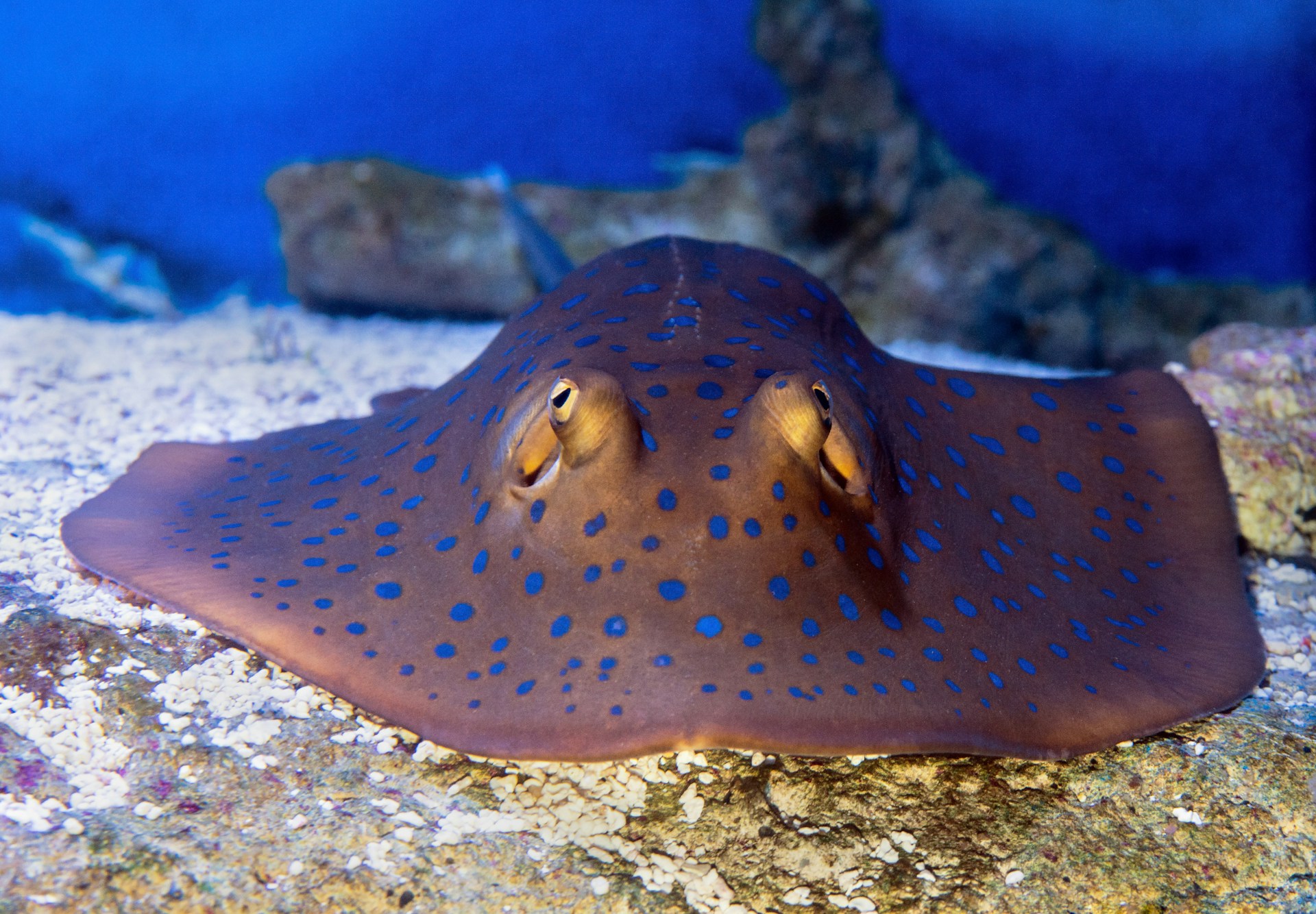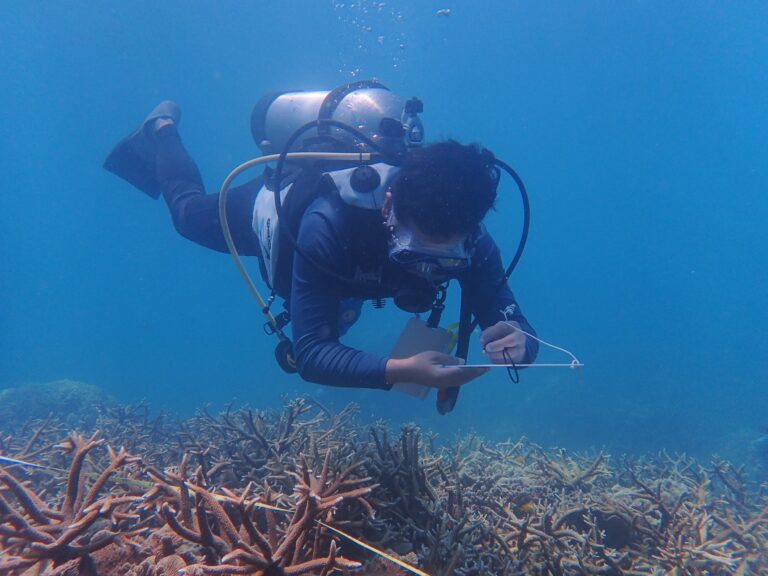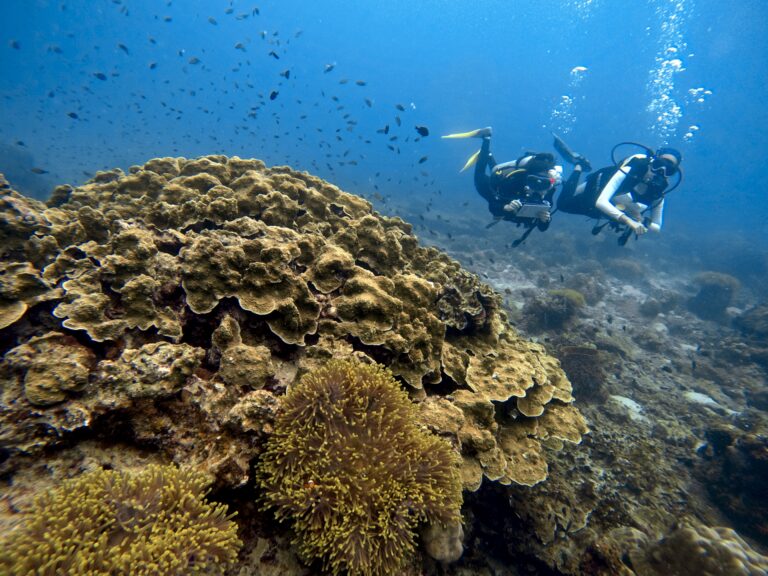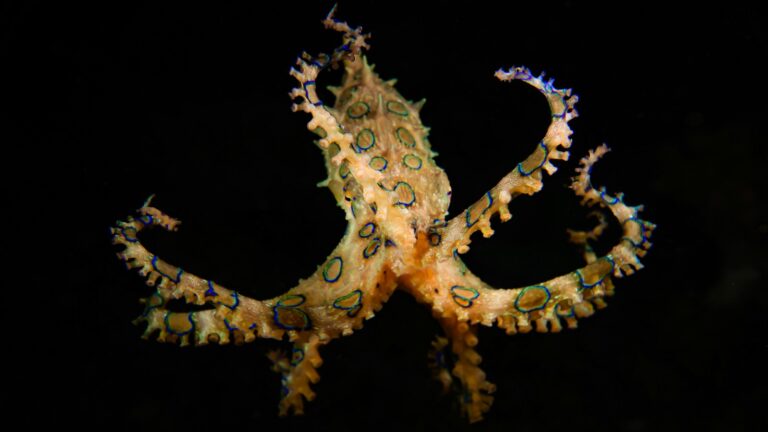Basic information about the bluespotted ribbontail ray
- Scientific name: Taeniura lymma
- Common name (English): Bluespotted ribbontail ray, bluespotted stingray, bluespot fantail ray, bluespotted lagoon ray, bluespotted ribbontail whipray
- Common name (Malay): Pari reben, pari karang, pari lalat
Unlike their giant manta cousins, the blue-spotted ribbontail ray is small -but trust me, it pops. With a smooth oval body covered in electric blue spots and twin racing stripes down its tail, this ray is hard to miss. That is, unless it’s buried in sand pretending it doesn’t exist. (Which, to be fair, it does a lot).
Each ray has a unique arrangement of blue spots. You’ll often catch a glimpse of its bright tail poking out from under coral ledges or rubble piles, or spot those big golden eyes slightly too obvious for its own good. Spook it, and whoosh – it’ll bolt.
Conservation status of the bluespotted ribbontail ray
IUCN Red List Status: Least Concern
Although this ray is not endangered, that doesn't mean there are no potential conservation issues.
Because of its beauty and size, the bluespotted ribbontail ray is popular with private aquarists even though it's poorly suited to captivity.
Bluespotted ribbontail ray habitat
You can frequently find bluespotted ribbontail rays in coral reefs and sand flats, and occasionally even mangrove fringes.
Bluespotted ribbontail ray diet
The bluespotted ribbontail ray hunt small prey that live in the sandy seafloor like shrimp or crabs. They will dig around in the sand to find their prey. Or they might dig themselves into the sand to ambush them.
How big are bluespotted ribbontail rays?
This ray is not very big. It's usually only around 350 cm wide. (For comparison, large rays like mantas can be twice as large!)
Bluespotted ribbontail ray maintenance
Did you know that some fishes regularly go to the salon? Well, sort of.
Some marine creatures like turtles, groupers, and sharks will go to a 'cleaning station' so that cleaner wrasse / shrimps pick parasites off of them. That's how they keep their spots vibrant!
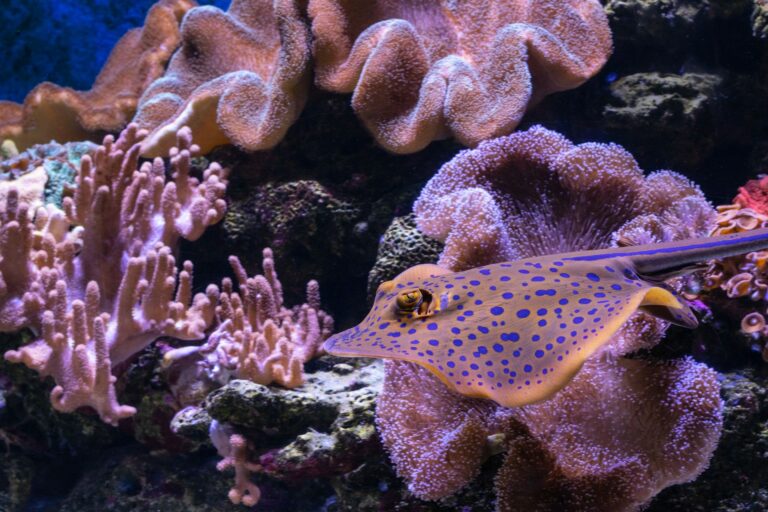
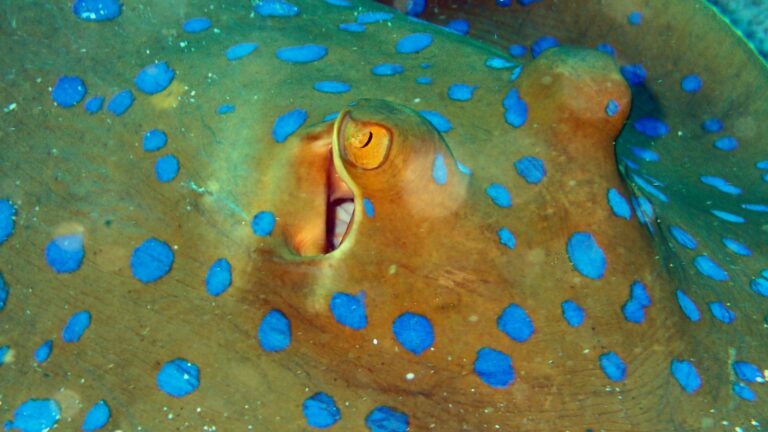
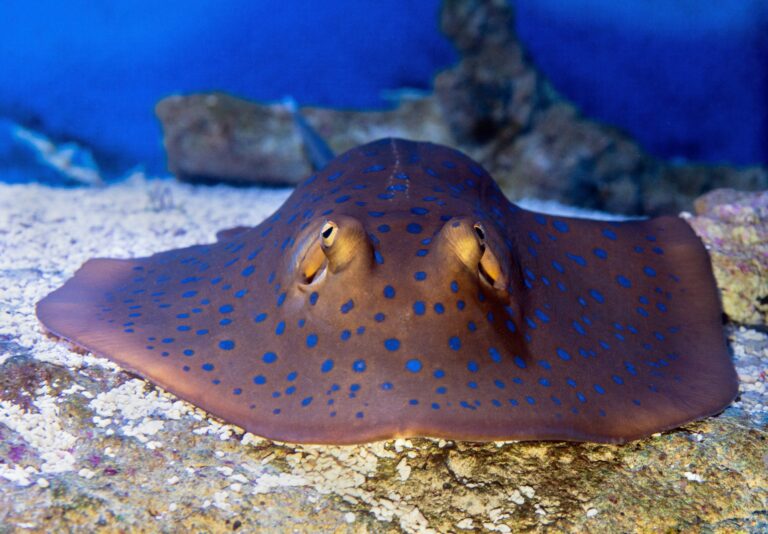
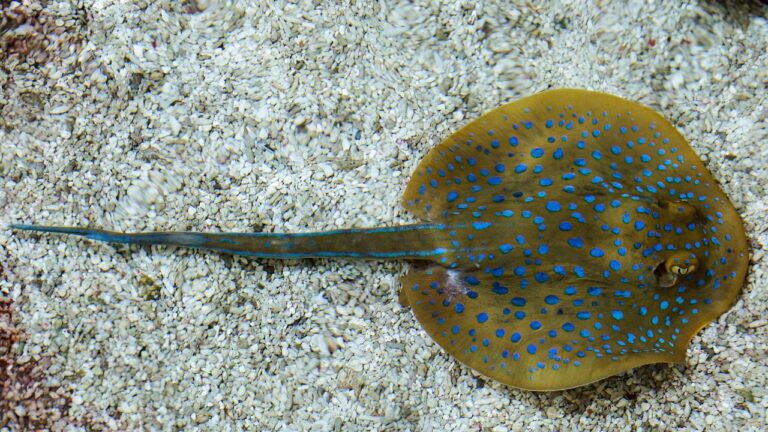
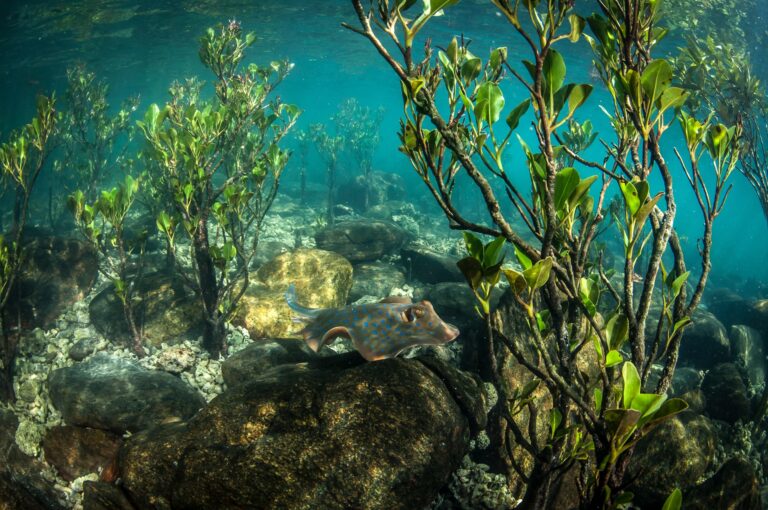
Where can you find bluespotted ribbontail rays in Malaysia?
These rays are a common sight in coral reef environments around Indonesia, the Philippines, Thailand, and of course, Malaysia.
These rays love shallow reefy spots. In Malaysia, you can find them in the following Marine Parks: Pulau Redang, Pulau Perhentian, Pulau Tioman, Pulau Payar, and Pulau Sipadan. They are especially common in Sabah waters. Aside from Sipadan, you can find them outside of marine parks as well, for instance around the islands of Kapalai, Mataking, and Pom Pom, as well as the Semporna area. There have been diver sites that lack sharks but with abundant sightings of the bluespotted ribbontail ray.
Interesting facts about bluespotted ribbontail rays


How should you look for bluespotted ribbontail rays?
The good news is, they’ve got striking blue spots! Hence, there is a higher chance of spotting them than not spotting them.
You can spot these rays in several locations. Look for them in the sand - they often rest partially buried, with only their eyes and tail visible. You can also search near coral ledges or rubble piles as these areas provide shelter and hunting grounds.
The best time to see bluespotted rays is in the early morning or late afternoon, as they are more active during these times.
Additionally, at night, small groups of rays follow the rising tide onto sandy flats to root for small benthic invertebrates and fishes in the sediment. When the tide recedes, the rays separate and withdraw to shelters on the reef.
Spending a lot of time underwater? Consider signing up for conservation diving projects!
What should you do if you see a bluespotted ribbontail ray?
Bluespotted rays are generally shy and not aggressive. In fact, that they are so skittish that sudden movements will startle them, causing them to flee. So you should only approach slowly and calmly. It is essential to respect their space.
Another reason why you should do so is their venomous spiny tail. Although bluespotted rays prefer to flee when they feel threatened, they may use their tail to defend themselves. Therefore, do not crowd them or otherwise provoke them.
- Move slowly and calmly – Sudden movements will make them vanish.
- Don't touch or chase them. Admire from a distance to prevent causing them stress.
- Be cautious of their tail. The venomous spines can cause injury if provoked.
